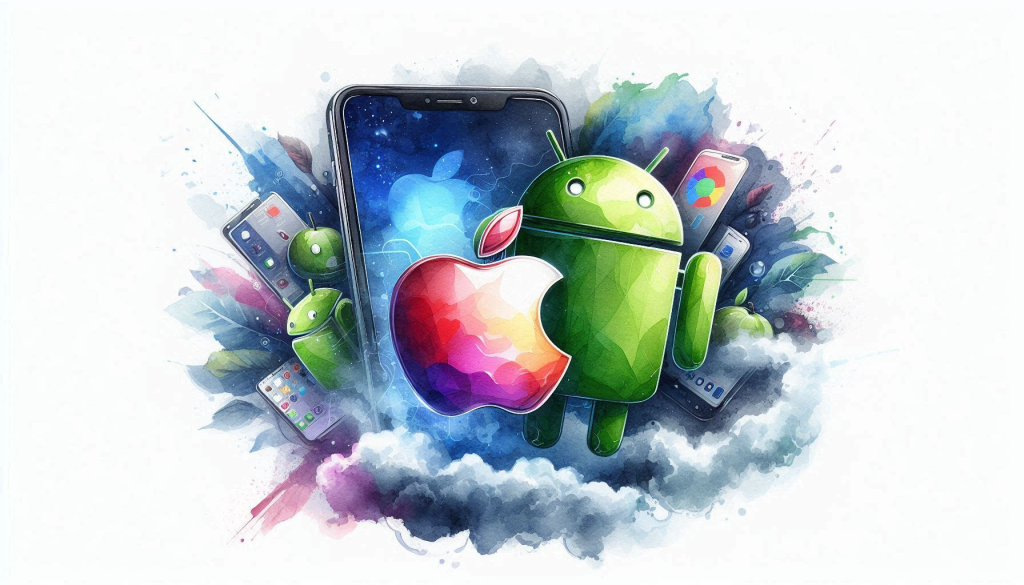While native app development offers the best performance, cross-platform frameworks are gaining traction due to their efficiency and cost-effectiveness. Here’s a comparison of some popular options to help you choose the right one for your ecommerce app.
Today’s mobile-savvy consumers expect a seamless shopping experience, and a well-designed ecommerce app can be a game-changer. But with the need to cater to both iOS and Android users, native app development for each platform can be time-consuming and expensive.
This is where cross-platform app development frameworks come in. These frameworks allow you to build a single codebase that can be deployed on both iOS and Android, streamlining development and reducing costs. But with an array of options available, choosing the right framework can be overwhelming. Let’s delve deeper into the top contenders:
1. Flutter: The Captivating Newcomer
Imagine crafting a visually stunning app with smooth performance, all while using a single codebase. Flutter, backed by Google, makes this a reality. Here’s a closer look at its strengths and weaknesses:
- Strengths:
- Unmatched Performance and Beauty: Flutter boasts its own rendering engine (Dart) that translates to exceptional app performance and highly customizable user interfaces (UIs). You can create UIs that feel as native as their platform counterparts.
- Rich Widget Library: Flutter provides a comprehensive collection of pre-built widgets that act as building blocks for your app. This extensive library saves development time and ensures a consistent look and feel across platforms.
- Hot Reload: A Developer’s Dream: Flutter’s hot reload functionality is a productivity booster. It allows you to see code changes reflected in the app almost instantly, eliminating the need for lengthy restarts and streamlining the development process.
- Weaknesses:
- Young Framework, Growing Community: While Flutter is rapidly gaining popularity, it’s a relatively new framework compared to some established options. This translates to a smaller community and resource pool compared to React Native or Xamarin.
- Learning Curve for Developers: If your development team isn’t familiar with Dart, there’s a learning curve involved. However, Dart is known for being a beginner-friendly language.
- Limited Platform-Specific Features: While offering a vast range of functionalities, accessing some advanced native device features might require additional workarounds or plugins.
2. React Native: The Established Favorite
React Native, powered by Facebook, has been a dominant force in the cross-platform app development arena. Let’s explore why it remains a popular choice:
- Strengths:
- Large and Supportive Community: React Native benefits from the vast React developer community. This translates into extensive learning resources, tutorials, and libraries readily available online.
- JavaScript Expertise Advantage: If your development team is already familiar with JavaScript and the React ecosystem, transitioning to React Native is a smooth process. This can significantly reduce development time and costs.
- Third-Party Plugin Powerhouse: The React Native ecosystem boasts a rich collection of third-party plugins that extend functionalities and add features to your app, saving you development time and effort.
- Weaknesses:
- Performance Considerations: While performance is improving, React Native apps might not always match the fluidity of truly native apps, especially for complex interactions. This is because it relies on a bridge to translate JavaScript code into native code.
- Native UI Hurdles: Achieving a perfect native look and feel across both iOS and Android can be more challenging compared to frameworks like Flutter with its custom rendering engine.
- Debugging Challenges: Debugging issues can be trickier due to the added layer of complexity introduced by the bridge between native code and JavaScript. Isolating the source of a bug can require extra effort.
3. Xamarin: The Microsoft Muscle
Xamarin, backed by Microsoft, offers a compelling alternative for developers familiar with the .NET ecosystem. Here’s a breakdown of its pros and cons:
- Strengths:
- Native Performance Power: Built with C#, Xamarin offers near-native performance and seamless access to a wider range of platform-specific features compared to some other frameworks. This results in a more responsive and fluid user experience.
- Microsoft’s Backing: Xamarin benefits from Microsoft’s ongoing development and support. This translates to regular updates, a growing community, and access to Microsoft’s developer tools and resources.
- Mature Framework: As a well-established framework, Xamarin boasts a large developer community and extensive learning resources, making it easier to find experienced developers and troubleshoot any challenges.
- Weaknesses:
- Learning Curve for Non-.NET Developers: If your development team isn’t familiar with C#, there’s a significant learning curve involved. This can extend development timelines and potentially increase costs.
- Cost Considerations: While Xamarin offers a free Community Edition with basic functionalities, some features require commercial licensing. This can add to the development cost, especially for larger projects.
- Larger App Size: Compiled Xamarin apps tend to be larger in size compared to some other frameworks due to the use of native code. This can be a concern for users with limited storage space on their devices.

4. Ionic: The Web Tech App Way
- Ionic has carved a niche for itself by leveraging familiar web technologies (HTML, CSS, JavaScript) for cross-platform development. Here’s what makes it an iconic player:
- Strengths:
- Web Tech Leverage: For developers comfortable with web development, Ionic offers a familiar and efficient development process. This can significantly reduce development time and costs, especially if you already have a web development team in place.
- Large and Active Community: Ionic boasts a vast and active community, providing ample resources, tutorials, and forums for troubleshooting and learning.
- Cost-Effective Development: As an open-source framework, Ionic keeps development costs minimal. There are no licensing fees, making it an attractive option for startups and budget-conscious businesses.
- Weaknesses:
- Performance Trade-Offs: Relying on web technologies can lead to performance limitations compared to native apps. Complex interactions or animations might feel less smooth.
- Limited Native Features: Accessing some advanced native device features can be more challenging compared to frameworks with deeper native integration. There might be workarounds or plugin limitations.
- Native Look and Feel: Achieving a perfect native look and feel across both iOS and Android can be more work compared to some other options. Extra effort might be required to create a truly platform-specific user experience.
- Choosing the Iconic Fit for Your Ecommerce App
- The ideal framework depends on your specific project requirements and priorities. Here’s a quick guide to help you navigate:
- For top-tier performance and stunning visuals: Flutter is a strong contender, especially if you have a team comfortable learning Dart.
- For leveraging existing JavaScript expertise and a large community: React Native is a solid choice.
- For near-native performance and access to a vast .NET ecosystem: Xamarin is a powerful option, but consider the learning curve and potential licensing costs.
- For a cost-effective and familiar web development approach: Ionic is a great choice, but keep in mind potential performance limitations.
- Remember, the “iconic” framework isn’t a fixed title. The best choice depends on your project’s unique needs. By carefully considering these factors and the pros and cons of each framework, you can make an informed decision that sets your ecommerce app up for success in the ever-evolving mobile landscape.

While the frameworks mentioned above (Flutter, React Native, Xamarin, and Ionic) are some of the most popular and well-established options, there are other cross-platform app development frameworks available to consider:
- Kotlin Multiplatform Mobile (KMM): This framework, created by JetBrains, leverages Kotlin to share code between Android and iOS apps. It offers good performance and is particularly suitable for developers already familiar with Kotlin.
- NativeScript: This open-source framework uses JavaScript for cross-platform development. It allows for native UI components and APIs access, offering a balance between performance and development speed.
- Appcelerator Titanium: This framework utilizes JavaScript, HTML, and CSS for cross-platform development. It provides a rich set of features and pre-built modules, but can have a steeper learning curve.
- Corona SDK: This framework is ideal for building 2D games and applications. It uses Lua for scripting and offers a visual development environment, making it easier for those new to coding.
- Framework7: This open-source framework is based on HTML, CSS, and JavaScript and offers a DOM manipulation approach for building mobile apps. It’s known for its flexibility and ease of use.
Remember, these are just a few examples. New frameworks are constantly emerging, so it’s always wise to stay updated on the latest trends and evaluate options based on your specific project requirements.



